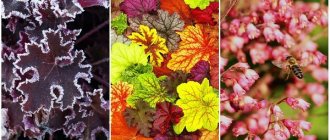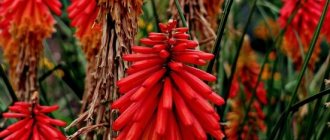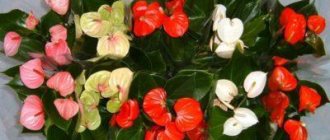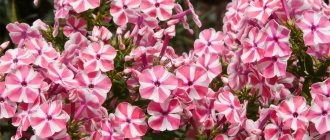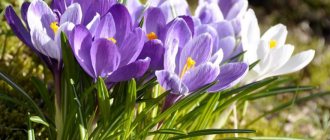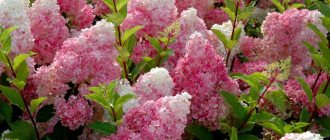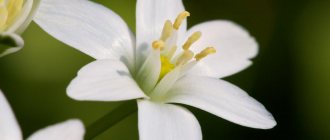For a gardener, planting deutia in the open ground and caring for it according to all the rules makes it possible for a long time to have a beautiful ornamental bush in your garden, the flowering of which will delight the eye every season. The species belongs to perennial woody plants from the Hydrangeaceae family.
In nature, deytsia are found in the countries of East Asia and Mexico, as well as in the Himalayas. The popularity of the plant is growing rapidly, and lovers are creating entire collections of varieties that differ in the size and shape of the flowers.
1.Description - what it looks like
Deutia is a multi-stemmed deciduous or evergreen shrub with thin, often drooping branches abundantly branched at the base. This genus includes more than 60 species of flowering shrubs. Plants often form a wide, spreading crown. The shoots are covered with brownish or burgundy bark.
The structure of the roots of this ornamental shrub is interesting - it has 2 thick rod processes that go deep into the ground and many thin feeding, fibrous roots.
The leaves are green, lanceolate, with small teeth along the edges, arranged in opposite pairs on short petioles. The leaf blades are glossy, covered with a whole network of branched veins. In the autumn months, the color of the leaves changes to rich red and burgundy tones.
In spring and summer, plants decorate themselves with large, branched, apical inflorescences consisting of many white or pink flowers. Inflorescences can be vertical or drooping and form on last year's branches. The buds can be simple or double, often bell-shaped; the flowers can reach 3–5 cm in diameter.
Deutia flowers often have a very pleasant aroma. The abundant and long-lasting flowering of the shrub attracts many beneficial insects to the garden, such as butterflies and bees. After flowering, round or oblong seed pods form on the bushes.
The plant is an excellent honey plant and got its name in honor of the Dutch amateur botanist Johann van der Deitz.
Plants first came to European countries from Japan and the Himalayas at the beginning of the 19th century. Only several decades later did European gardeners learn that deutzia is also found in China. The lifespan of the bush is about 25 years.
↑ Up,
Dimensions . Depending on the specific species and variety, the size of the action can be highly variable. When grown in the garden, some shrubs remain miniature and do not exceed a height of 50 - 60 cm, while some species can reach 6 meters.
Transfer
The procedure is performed while the bush is young and the root system has not grown very much. Adult plants are also replanted, but you will have to act very carefully: carefully and deeply pry up the underground part, having previously dug up the plant along the perimeter of the crown projection. You can’t rush: it’s important to preserve the earthen lump and damage as few fibrous roots as possible.
Deutzia is replanted only in the spring: it takes until autumn for the shrub to take root well in the new area. Effective and safe biostimulants reduce the level of stress during transplantation: Epin, Fitosporin, Zircon. Use the products according to the instructions: before or after transplantation, in the optimal concentration.
3.Planting and care in open ground
To grow deutia, you should choose an area open to the morning sun. When grown in partial shade, flowering will be less abundant and leaf color will remain faded during the autumn months.
It is advisable that the midday rays of the sun do not fall on the plants - in some varieties, the buds may burn out in such conditions. Morning lighting will remain preferable.
You should not plant plants in lowlands where water accumulates after the snow melts. Poorly drained soils and places with shallow groundwater are also not suitable for the flower.
Plants do not like exposure to cold drafts - it is advisable that there is some large object on the north side of the bush. Place the shrub in an area protected from strong winds. Mature branches of the plant have a cavity in the middle and break easily.
↑ Up,
3.1.How and when to plant
Planting is carried out in spring or early autumn so that the plants have time to adapt to new conditions before the onset of cold weather. Autumn planting is usually carried out in September; for spring planting it is worth choosing a time so that the buds become swollen, but leaves do not have time to form.
It is best to plant on a cloudy or even rainy day - in this case, the bushes will quickly get used to the new conditions. If the weather is warm and sunny, then planting should be postponed until evening.
If seedlings with a closed root system are purchased, then they can be planted throughout the entire warm period - from spring to autumn. Such plants are moved along with the root ball without destroying it and, therefore, they tolerate a change in location better and begin to grow faster.
↑ Up,
In order to plant plants, prepare a plot of land - dig up and level the surface of the soil. They add nutrients - well-rotted organic matter and a small amount of mineral fertilizers. The addition of wood ash has a very good effect on the condition of plants - it will not only enrich the soil with useful substances, but also make it loose, and also adjust the acidity level.
The shrub prefers alkaline soils, so crushed chalk, lime milk or dolomite flour are added to the acidic soil before planting.
For seedlings with an open root system, the condition of the roots is assessed - they should be healthy and dense. If there are rotten or disease-affected areas, they are cut off with sharply sharpened sterile pruning shears. Too long sections of rhizomes are reduced to 35 - 40 cm.
3 - 4 hours before planting, they begin to prepare a clay mash for plants - dilute ordinary gin with water to the consistency of liquid sour cream. It is worth adding a little potassium permanganate to the finished mash for disinfection and growth hormones for better rooting of seedlings. 2 - 3 hours before planting, the plants are lowered into it and left until the very moment of planting.
↑ Up,
During soaking, planting holes are prepared, the depth and width of which should exceed the root ball of the seedling by 1.5 - 2 times - approximately this value will be 40 - 60 cm.
Leave a distance of about 1.5 - 2.5 meters between plants. The fact is that even small varieties of deutia often grow in width and occupy an impressive amount of space.
At the bottom of the planting hole, a drainage layer is made of river pebbles, crushed stone or broken brick. The height of the drainage layer can reach up to 10 cm. A nutrient layer containing mineral and organic fertilizers is poured onto the drainage.
↑ Up,
If a bare-rooted seedling is planted, a mound of soil is made in the center of the hole. Plants are placed on the top of the mound and the root system is straightened, making sure that the shoots are not bent or directed upward. Seedlings with closed roots are moved directly with the earthen ball.
The plants are sprinkled with soil in a circle and tamped down to remove air pockets. The planted flowers are watered abundantly and if the soil has subsided greatly after watering, add a small amount of soil. After planting, the root collar of the plant should be level with the soil or 1 - 2 cm below it.
↑ Up,
The bases of the bushes are mulched with a fairly thick layer of sawdust, chopped bark or straw. Mulch will prevent the development of weeds and keep the soil evenly moist, preventing the evaporation of moisture from the soil surface. The height of the mulch layer can be 4 - 6 cm.
Immediately after planting, you can also shorten all tall branches, leaving 3 to 5 healthy buds on each shoot.
During the month after planting, you need to especially carefully monitor the soil moisture at the base of the plants. Overdrying of the soil at this moment leads to the death of seedlings.
↑ Up,
3.2.Soil for action
Nutritious soil with a loose texture that easily allows moisture and air to pass through. If the soil on the site is too heavy and quickly cakes over time, then a sufficient amount of river sand or even small pebbles is mixed into it.
It loosens the soil well and fills it with nutrients from leaf and turf humus. The flower does not like acidic soils and does very well in alkaline soil. When grown in an acidic environment, the development of the bush stops, it becomes weak and loose.
↑ Up,
3.3.How to care for a plant in the garden
Deytsia does not like either severe drying out or stagnant moisture at the roots - water the bushes as needed. Plants planted in open, sunny areas will consume more moisture than those grown in partial shade.
Watering is carried out in the morning or evening, each time completely saturating the soil. Under each bush it is worth adding 1 - 2 buckets of warm rain or settled tap water. Watering during the daytime can cause sunburn. When it hits wet leaves, the light passes through a lens and intensifies its effect.
↑ Up,
After watering, it is worth loosening the surface of the earth, removing weeds along with the roots and renewing the layer of mulch.
Watering is stopped in August, and in the rainy autumn months they even cover the base of the bush with waterproof material. The fact is that the shoots, saturated with moisture, do not have time to ripen by the beginning of winter and suffer greatly from the cold. Reducing watering leads to complete lignification of the branches, which means they will not be afraid of frost.
↑ Up,
3.4. Trimming action
In the first 2 - 3 years, young plants are left alone, giving them the opportunity to develop at their own discretion.
Shrub pruning should be done correctly. The fact is that many varieties and species have characteristic flexible shoots that bend beautifully under the weight of buds in the spring months. Shortening such branches will lead to the loss of this pleasant feature.
The action should be formed carefully; most likely, the entire cutting will be reduced to rejuvenating the plant and removing old and diseased shoots more than 4 - 5 years old. Also, during pruning, branches that thicken the crown are removed.
↑ Up,
Pruning is carried out annually, immediately after flowering, with a sharply sharpened sterile garden tool - a knife or pruning shears. You should not delay cutting your hair - the plants lay buds this fall for flowering next season. Pruning too late will inevitably affect the flowering of the bush.
Sanitary pruning can be done as needed - such pruning will be most severe in the spring, when the buds swell and it becomes clear which shoots did not survive the winter well and died.
Shrubs with erect shoots can be kept compact by pruning and a dense, rounded crown can be formed. Without annual pruning, such plants will become too sprawling and unkempt.
↑ Up,
Once every 4 - 5 years, old bushes can be rejuvenated by cutting off a third of all shoots almost to the ground. During rejuvenation, such branches are left with only 30 cm of growth.
After pruning, all wounds should be treated with garden varnish to protect against the entry of pathogenic microorganisms and the onset of rot. After drastic pruning, plants can be overworked for a long time - it is better to adjust the shape often, but little by little.
↑ Up,
3.5.Feeding
To maintain health and abundant and long-lasting flowering, it will be enough to feed the shrub 2-3 times during the season. Both mineral compounds and organic fertilizers are used as fertilizers.
When choosing mineral fertilizers, you should pay attention to preparations containing sufficient amounts of potassium and phosphorus. These elements will promote abundant flowering, potassium will additionally strengthen the root system of the flower and help it survive the winter. You should not use compounds with nitrogen - this element contributes to a large increase in green mass, but this will occur to the detriment of the formation of buds.
↑ Up,
Well-rotted manure or compost is usually used as organic fertilizer. Plants respond well to the use of chicken manure, but it must be diluted in a large amount of water.
The first time fertilizing is done in the spring, when the leaves have just begun to unfurl. The plants are fed the second time during the flowering period. It is advisable to carry out the third feeding after flowering, if the plants are in nutrient-poor soil.
↑ Up,
3.6.How and when to replant shrubs
Of course, it is better to choose a permanent location for the plant, where the bush will spend its entire life. Transplantation is carried out only in cases of extreme necessity - if the site is categorically unsuitable for the plants.
The most suitable time for transplantation will be early spring. If you replant after flowering, the plants do not have time to take root in the new place before winter and often die.
It is best to try to move the shrub to a new place along with the root ball - transfer it. For planting, a hole with a drainage layer at the bottom is first prepared.
↑ Up,
The transplanted bush is dug in a circle, gradually going deeper under the root system. When digging, it is worth considering that the diameter of the root system will be approximately equal to the diameter of the deutzia crown.
A piece of dense polyethylene is placed near the plant, on which the dug up bush is placed. This way, it will be possible to move the flower to a new location without disturbing the root system as much as possible.
Having placed the plants in the new hole, the soil is thoroughly compacted and then watered abundantly. For 5 - 7 days, it is better to protect such specimens from direct sun. In order to reduce the evaporation of moisture from the leaf blades, all long shoots are shortened by a third of their height.
↑ Up,
Only young plants should be replanted - this procedure is easier for them. In order to support the bushes during this difficult period, the leaves are sprayed with preparations such as epin and zircon.
With age, the bushes form an extensive root system and reach impressive sizes, which is why replanting them will be difficult. Large plants take a long time to get used to new conditions and may even die. Bushes also react negatively to damage to thin, fibrous roots.
↑ Up,
3.7. Care in autumn, wintering
Since plants do not like excess moisture, in the autumn months, if the weather is cloudy and rainy for a long period of time, the bases of the bushes should even be covered from moisture with thick non-woven agricultural material.
When grown in open ground, many species are able to withstand quite severe frosts without shelter - for example, the deutia tolerates air temperatures of about -20 degrees Celsius calmly. At lower temperatures, plants may die even despite the presence of heavy snow cover.
In regions with harsh winters and little snow cover, it is better to prepare plants for winter and insulate them in the fall. Since the formation of flower buds occurs in the autumn months, the slightest hypothermia of the branches will lead to a lack of flowering.
↑ Up,
When grown in the middle zone in mid-autumn, flexible shoots of deutia are tied and bent to the surface of the soil. The shoots are fixed using special pins.
A small wig with a rigid frame is built over the plant, its entire volume is filled with dry fallen leaves. Non-woven agricultural material is placed on the frame and the greenhouse is additionally wrapped with polyethylene on top. Remove the cover in the spring, as soon as the snow melts.
If the shoots have become stiff and it is not possible to bend them to the ground, then such branches are tied with twine or twine and the bush is surrounded with a special plastic garden net or chain-link, the height of which will be equal to the height of the bush. The internal volume is filled with fallen leaves or spruce branches, and then the frame is covered with non-woven material and plastic film.
↑ Up,
With age, the shrubs will survive the winter easier and it will be possible to use non-woven material, without polyethylene, for covering. Such a shelter will breathe, and plants under it will rot and rot less.
Some species cannot stand the winter in the central zone and are taken into the house at the end of autumn. The bushes are stored until spring in a cool and dark place - for example in a cellar, occasionally moistening the soil.
↑ Up,
Plant conditions
Deytsia (photo and description of the shrub will help create the right conditions for growing the plant) is undemanding in the choice of soil and does not require special maintenance conditions, but it is necessary to adhere to basic care recommendations.
Lighting
Deytsia loves lighted areas, but being under the scorching sun all day can lead to burns. The best option is a place that will be brightly lit in the first half of the day and hidden in partial shade in the afternoon.
Temperature
In places with shade from the midday heat, the “eastern beauty” feels great in the summer heat. The frost resistance of Deytsia depends on the species. Most varieties can withstand winter temperatures down to -25o, some hybrids can withstand even more severe frosts.
Deytsia does not tolerate snow and frost well, so it needs shelter for the winter.
The combination of low temperatures and lack of snow cover is dangerous for Deytsia. When the ground part freezes, the plant has the ability to grow new shoots from the roots and recover, and freezing of the root threatens the loss of the bush. A winter shelter will help you avoid such trouble.
Soil and drainage
The best soil for planting Deytsia is nutritious and loose, with neutral acidity. A drainage layer of sand or small pebbles is required. Suitable composition: leaf soil, humus, sand in a ratio of 2:2:1.
Watering
Deutia (the photo and description of the shrub will prompt the correct choice of planting site) is more likely to withstand prolonged drought than stagnation of water at the roots. For this reason, the bush should be watered no more than once a week in the absence of natural precipitation.
The action should be watered once a week
The one-time water requirement for an adult plant is 1 bucket. After watering, it is advisable to loosen the soil around, but so as not to damage the surface roots. If the bush is surrounded by mulch, this action is not necessary.
4.Reproduction
There are several ways to propagate deutia - you can grow a bush from seeds, obtain daughter plants using cuttings, air layering or division.
4.1.Growing from seeds
This method is suitable only for experienced and patient gardeners, as it will take a sufficient amount of time. It is not advisable to use seeds from your own collection for propagation of varietal plants - the resulting daughter bushes may not inherit the varietal characteristics of their parents. Flowering in such specimens may be shorter and more abundant, and the color and shape of the buds may be strikingly different from the parents.
If desired, you can collect only seeds that have fully ripened on the plants in mid-autumn. For collection, a fine day is selected - warm and dry. The resulting seeds are laid out on a sheet of paper and left in a warm and well-ventilated room for 2 - 3 days to dry.
↑ Up,
The planting material prepared in this way is poured into paper envelopes and stored in a cool and dry place, used as needed for 1 - 2 years.
The first buds will decorate plants grown from seeds only in the 3rd - 5th year of life. Sow seeds in spring, at home, using seedling boxes. Drainage holes should be made at the bottom of the boxes and a layer of expanded clay or river pebbles should be laid.
↑ Up,
Fill the containers with a loose substrate based on garden soil with the addition of humus and river sand. the soil surface is moistened with warm water from a spray bottle and planting material is sown. The seeds are covered on top with a layer of earth about 5 mm thick. and spray again.
To create a greenhouse effect, the seedlings are covered with a transparent cover, which is removed daily and the crops are ventilated. Keep the seedlings in a warm place with bright but diffused light. With the appearance of the first shoots (usually within a month), the cover is removed completely.
For 2 years the bushes are kept at home and only in the third year can they be planted in the garden.
↑ Up,
4.2.How to grow deutia from cuttings
One of the easiest ways to propagate plants. Half-ripe stem cuttings take root easily if certain agricultural practices are followed. Rooting is carried out in early summer.
The cuttings are cut so that there is an oblique cut at the base and a straight cut at the top. The lower cut should pass under the leaf node at a distance of about 7 - 10 mm, and the upper one - at the same distance above the bud. Each cutting should contain 2 - 3 internodes and reach a length of 12 - 15 cm.
The lower pair of leaves is removed completely, and the upper leaf blades are shortened by a third or even half the length to reduce moisture loss. The base of the cuttings is dipped in rooting powder.
↑ Up,
Small flower pots with drainage holes and a moisture-wicking layer are filled with a loose peat-based substrate with the addition of the same amount of river sand. The soil surface is moistened with warm water using a spray bottle.
The cuttings are immersed in the soil to a depth of about 1 cm at a slight angle. To maintain high air humidity, plants are covered with glass or covered with plastic film, making sure that it does not touch the leaves. Every day the cuttings are ventilated and the water condensation that appears on the shelter is removed.
Keep plants at normal room temperature in a room with bright but diffuse lighting. The fact that the first roots have appeared under the surface of the soil will be indicated by young leaves formed at the base of the cuttings. The cover is completely removed from such plants.
↑ Up,
During the autumn-winter period, the cuttings are kept at home, replanting them into slightly larger pots as they grow. During this period of time, the air temperature is lowered to 5 - 7 degrees Celsius and the frequency of watering is reduced to a minimum, simply protecting the soil from completely drying out. Stop feeding completely.
In May, after the bushes have grown stronger, they can be planted in the garden.
Completely lignified cuttings are usually pruned closer to autumn; they can reach 15 cm in length. Rooting is carried out in the spring, and before the rooting process, the cuttings are stored in the refrigerator at a temperature close to 0 degrees. In the spring, rooting is carried out in the same way as for half-ripe young shoots.
↑ Up,
4.3.Dividing the bush
When choosing this method of reproduction, it is worth remembering that it is quite traumatic and the chance of death of all the divisions is too high. Division can be combined with transplanting young multi-stemmed shrubs. In order to propagate plants, bushes are dug up and the roots are shaken off from soil residues. Inspect the root system and remove all rotten and diseased sections, cutting them back to healthy tissue.
Mark the places of division, making sure that each division receives its own, sufficiently developed roots and ground part. The division is carried out with a sharp knife, and if necessary, with a hacksaw.
↑ Up,
The wound surface resulting from cutting roots and dividing plants is treated with charcoal powder or wood ash. This treatment will help the wounds dry out and heal faster and prevent pathogens from entering them.
In cuttings, all shoots are shortened to a third of the height. Plants are planted in open ground, watered abundantly and protected from the sun for a week. The bases of the bushes are mulched.
↑ Up,
4.4.Formation of air layers
At the end of the vein or the beginning of summer, side shoots located low above the soil surface are bent into specially prepared trenches. The branches are fixed so that the top remains above the ground and dug in.
During the summer months, the soil in this area is kept evenly moist. After 1 - 1.5 months, young shoots may appear in this place.
There is no need to rush to immediately separate such a cutting from the mother bush - it is completely cut off only next spring, when the young bushes have become stronger.
The advantage of this method is that from one sufficiently long branch you can get several daughter plants at once, since roots often appear in each buried leaf node.
↑ Up,
Fertilizers for plants
Feeding Deytsia is carried out in the first half of summer, before the buds appear and during flowering. After the end of the active growing season, closer to autumn, fertilizing is stopped, since an overly fertilized plant cannot easily tolerate the cold.
Mineral mixtures
Complex mineral fertilizers are sprinkled under each bush in an amount of 120-150 g. This is done 2 times - at the beginning of bud swelling and during vigorous flowering.
Organic fertilizers
The soil around the bush is fertilized with organic fertilizers monthly.
For this use:
- liquid manure - 3-4 liters for each bush;
- compost mixed with wood ash.
5. Application in landscape design
Deutia can be used as a border for edging various areas of the garden - in this case, it is worth choosing miniature plants for planting.
Taller shrubs can be planted as hedges. With the onset of summer, they will delight the eye with abundant flowering, and in the fall they will become a bright red accent in any garden.
The resistance of this flowering ornamental shrub to a polluted atmosphere allows the plants to be used in urban landscaping. The plant looks great as a single bright accent or surrounded by other flowering shrubs and herbaceous plants.
↑ Up,
6. Diseases and pests
A plant that receives proper care rarely suffers from disease or pest attacks. Closely located groundwater and frequent watering can lead to rot.
A dense planting with insufficient air movement can lead to fungal diseases.
Among the harmful insects, aphids and bumblebee proboscis sometimes appear.
↑ Up,
7. Varieties and types of action:
7.1. Rough or star-shaped deutzia - Deutzia Sabra
Flowering deciduous shrubs originating from Japan. The height of the plants can reach 120 - 250 cm, the flowering period begins in the second half of May and can last until mid-June. Thin shoots are covered with brown flaky bark.
↑ Up,
7.1.1.Deytsia rough Captivity - Plena
Deciduous shrubs of medium height - reaching 1.5 - 3 meters. The variety is characterized by large, green, glossy leaves arranged in opposite pairs. During the flowering period, brushes with drooping white or pink flowers are formed at the tops of the shoots. The buds open in late May - early June.
↑ Up,
7.1.2. Deutzia scabra Marmorata
A characteristic feature of this spreading perennial is its light green leaf blades with white spots and specks. The shrubs can reach 1.5 meters in height and form white bell-shaped buds in late spring - early summer. To grow this variety, it is worth choosing an open sunny area; in partial shade, the color of the leaves will become simply green.
↑ Up,
7.2.Deutzia gracilis
A medium-sized perennial native to Japan. The height of these deciduous plants reaches 60 - 150 cm. The species is distinguished by very early flowering - the first snow-white buds can open in the second half of April. During the flowering period, the plants have a pleasant aroma.
↑ Up,
Characteristics
Description:
- shrub - slow-growing, in 6–10 years it grows up to 1 m in height and 1.2 m in width, then growth stops completely;
- bush shape - spherical;
- flowers are bisexual, bell-shaped, up to 4 cm in diameter;
- color - white-pink, from below - more saturated shades, gradually lighter towards the top;
- the root system is fibrous-tap, consists of a pair of long single roots extending vertically deep into the soil, framed at the base by a ball of fibrous, small root processes;
- shoots are brown, with a nutty tint, after 1–2 years they become dark and hollow inside;
- leaves are oval-shaped, dark green, up to 10 cm long, smooth, sometimes slightly pubescent;
- flowering - 3 years after planting;
- flowering period - June - July;
- It is frost-resistant, but in winter it requires insulation of the root circle.
Among all the species diversity, pink deutia is considered one of the most beautiful representatives of the genus

